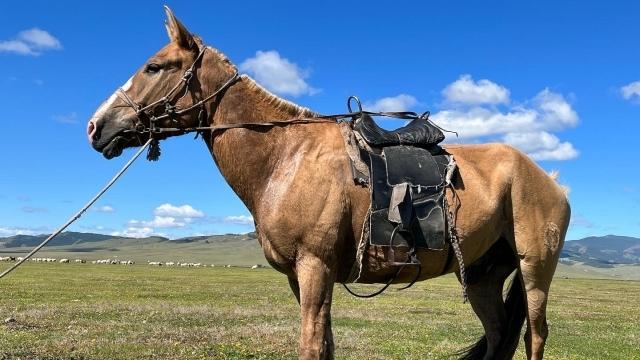
One aspect that mammals have in common, including ourselves, is the recognition of a home. In Mongolia the herding encampment (khot ail) is the joint ‘home’ for herders and herd animals alike, while seasonal migration of the encampment coincides with the grazing and movement of the herds within broad river valleys in the Khangai Mountains, delineating an inter-species form of territory, or homeland (nutag). Instead of viewing the home and territory from a political or economic standpoint, this presentation explores the concept of mobility in connection with the home from a more-than-human perspective, through the way in which herding families, horses and other species that make up this hybrid herd community, live an interconnected co-existence. These concepts tie in not only with a tethering to one’s home, but with a form of multispecies mobile pastoralism, which involves a particular way of managing, nurturing and caring for free-ranging herds, and I would argue is an integral component of a divers and healthy grassland steppe ecology.
Natasha Fijn is Director of the Australian National University’s Mongolia Institute. She has been awarded a mid-career ARC Future Fellowship to conduct research on 'A Multi-species Anthropological Approach to Influenza' (2022-2026). Natasha wrote a seminal multispecies ethnography based in Mongolia, Living with Herds: human-animal coexistence in Mongolia (2011). She has co-edited several volumes, including three special issues oriented toward visual anthropology and ethnographic filmmaking, and three engaging with sensory and multispecies anthropology in the journals Inner Asia (2020), The Australian Journal of Anthropology (2020) and Anthropology Today (2023). Two forthcoming co-edited books in 2024 are: Nurturing Alternative Futures: Living with Diversity in a More-than-Human World and Mongolian Medicine: Knowledge, Transmission and Practice Across Inner Asia.
Zoom Link:
https://bit.ly/3XEVLe2
Meeting ID: 812 1179 0732
Password: 968025
Location
Speakers
- Dr Natasha Fijn, ARC Future Fellow
Event Series
Contact
- Natasha Fijn
File attachments
| Attachment | Size |
|---|---|
| N_Fijn_9_Oct_2023.pdf(6.67 MB) | 6.67 MB |